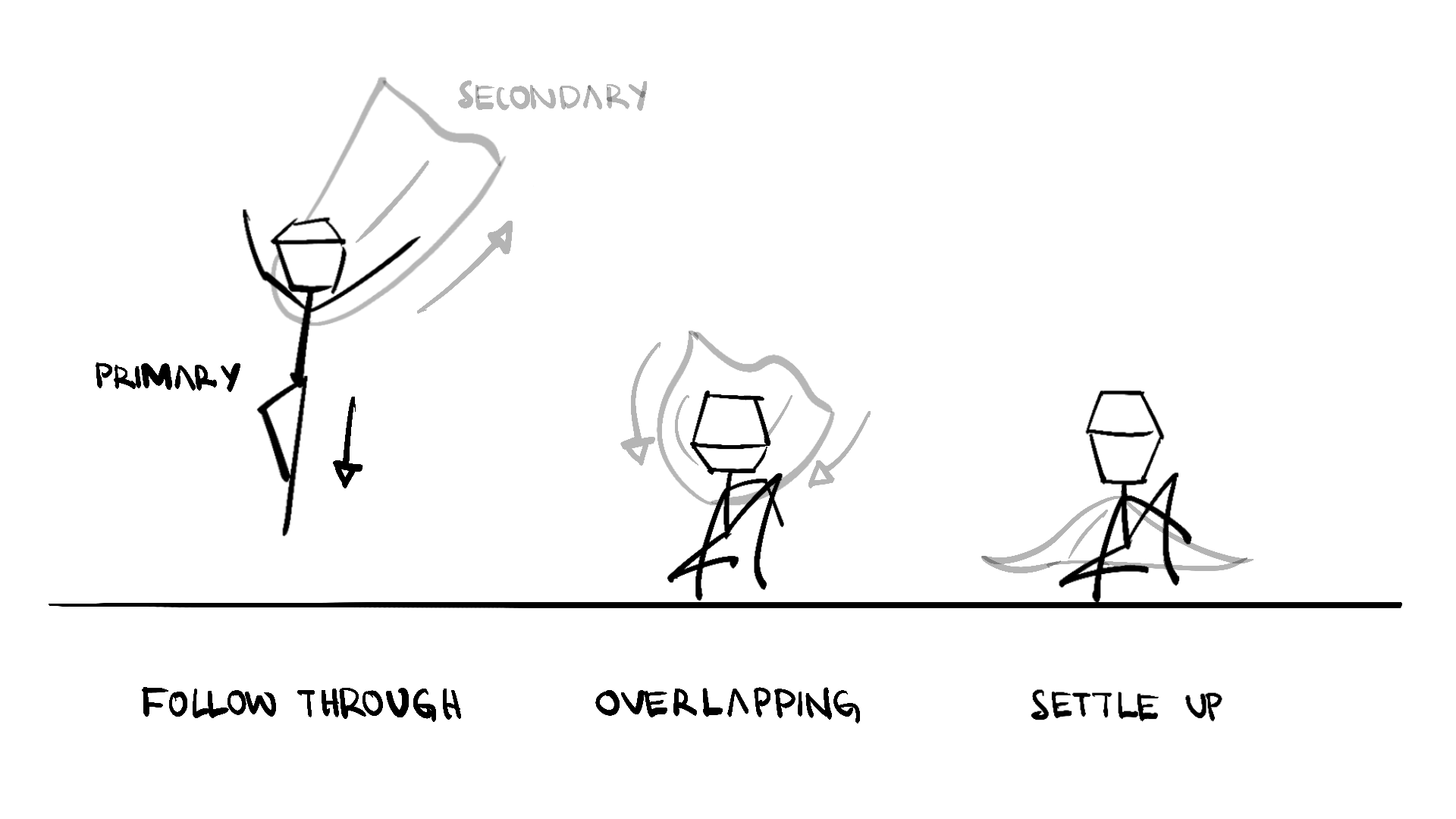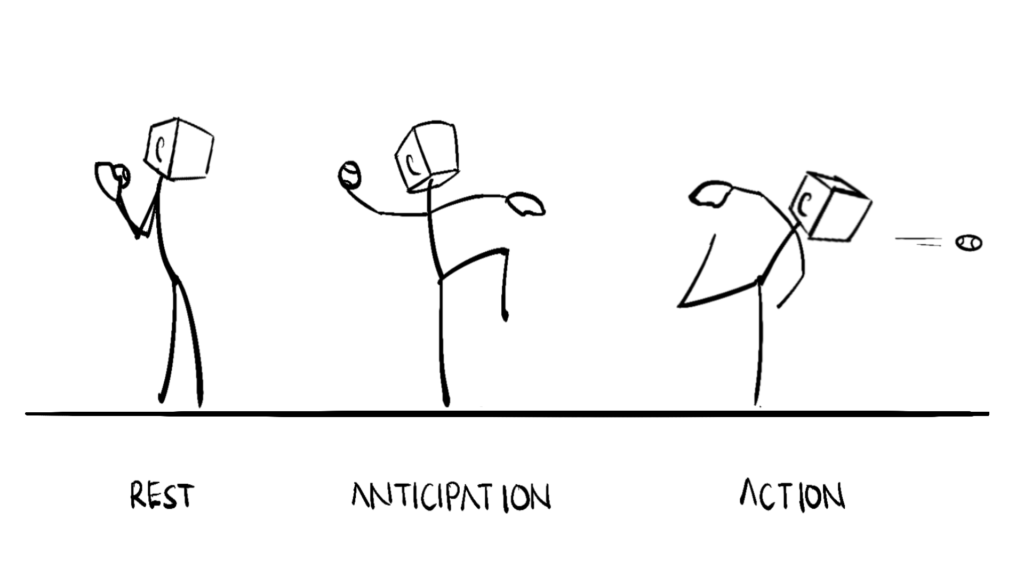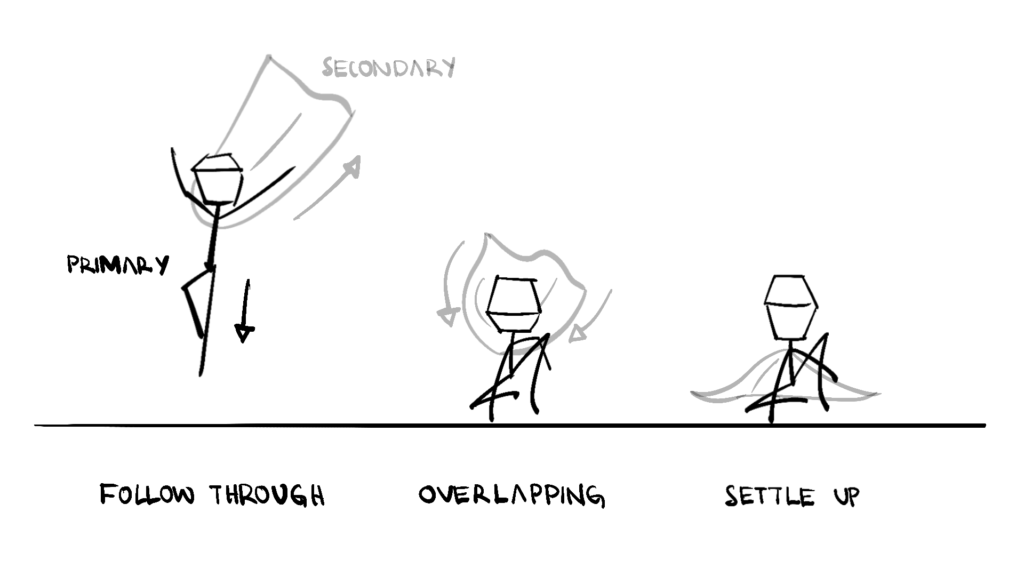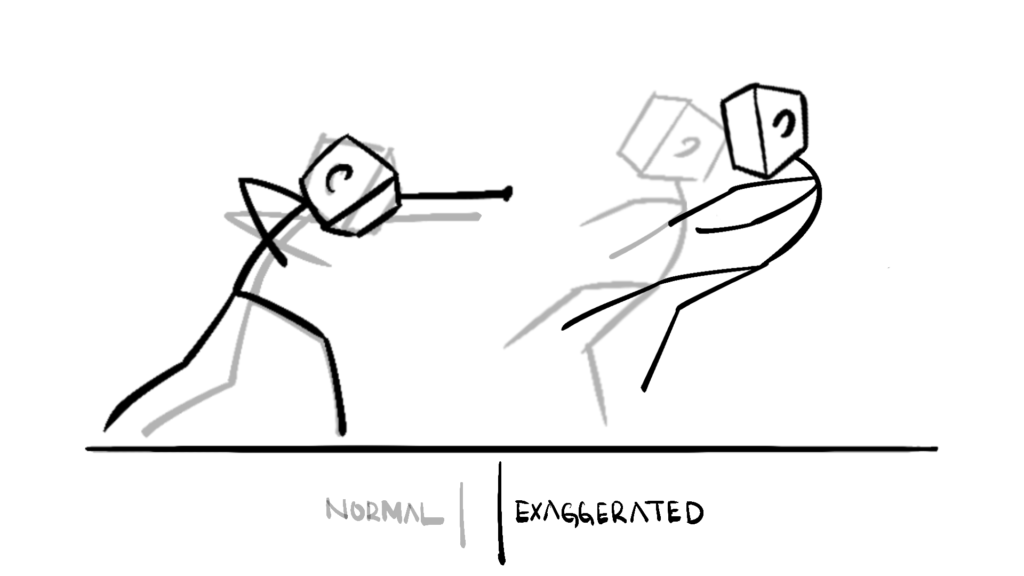Principles of Animation

The basic principles of animation are a set of fundamental concepts and techniques that animators use to create movement and bring characters to life. These principles were first developed by Disney animators Ollie Johnston and Frank Thomas in their book “The Illusion of Life: Disney Animation”.
1. Squash and Stretch

This principle emphasizes the importance of giving objects weight and volume by stretching them when they move or squash them when they come to a stop. It adds a sense of elasticity and realism to the animation.
2. Anticipation

Anticipation refers to the preparation or wind-up action that precedes a main movement. It helps to telegraph the action and make it more believable. For example, before a character jumps, they might crouch down to gather momentum.
3. Staging
Staging involves presenting an action or idea clearly and effectively to the audience. It includes framing, composition, and timing to ensure that the viewer’s attention is focused on the most important elements of the animation. Learn more about staging here.
4. Straight Ahead and Pose to Pose
These are two different approaches to animating movement. Straight ahead animation involves drawing each frame in sequence from start to finish, creating a fluid and spontaneous motion. Pose to pose animation involves planning key poses or frames first, then filling in the gaps with in-between frames to create a more controlled and deliberate motion.

5. Secondary Action
Secondary actions are additional movements that complement and enhance the main action, adding depth and complexity to the animation. They can help to convey character personality, mood, or emotion.
6. Follow Through and Overlapping Action
Follow through refers to the continuation of movement after the main action has stopped, while overlapping action involves different parts of an object or character moving at different rates. These principles add realism and fluidity to the animation by mimicking the natural physics of motion.

7. Arcs
Most natural movements follow curved or arced paths rather than straight lines. Arcs help to add fluidity and realism to animations, whether it’s the swing of a pendulum or the trajectory of a ball being thrown.
8. Slow In and Slow Out

Objects in motion tend to accelerate and decelerate gradually rather than moving at a constant speed. Slow in and slow out refers to easing into and out of movements to create a more natural and organic motion.
9. Timing
Timing refers to the speed and rhythm of movement within an animation. It’s crucial for conveying weight, impact, and emotion. A slight variation in timing can completely change the feel of an animation.
10. Exaggeration

Exaggeration involves amplifying movements or expressions to emphasize emotions or actions. While animation strives for realism, exaggeration can enhance clarity, appeal, and entertainment value.
Conclusion
These basic principles serve as the foundation for creating dynamic and engaging animations across various mediums, from traditional hand-drawn animation to modern computer-generated imagery (CGI). By understanding and applying these principles, animators can create animations that captivate audiences and evoke emotion.


